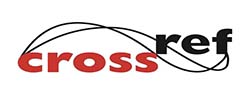Author: Diane Joula Kusen, Jeannette Femmy Pangemanan, Winda M. Mingkid
![]() DOI: 10.22161/ijeab.75.21
DOI: 10.22161/ijeab.75.21
Keyword: Proximate Analysis, Apu-apu Leaf, Fish Feed, Tondano Lake.
Abstract: The purpose of this study was to analyze the nutritional content (Proximate Test) of Apu-apu Leaf weeds in the waters of Lake Tondano and to determine the growth of Tilapia (Oreochromis niloticus) fry that consume pellets of raw material for the formulation/composition of Apu-apu Leaf (Pistia stratiotes) in different percentage levels. This research is one solution to obtain raw materials for fish feed from weeds in Lake Tondano so that it can overcome the high cost of feed and minimize pollution in Lake Tondano. The general approach used to achieve the objectives of this research activity is the collection from Lake Tondano, namely the leaves of Apu-apu (Pitsia stratiotes). The test fish were obtained from fish cultivators in Eris Village, Eris District, Minahasa Regency. Fish size 5-8 cm. Prior to the research, the fish were acclimatized for one week for environmental adjustment. The study was carried out by following a 5 treatment design and 3 replications, the design used was RAL, and measurements of ratios, daily growth and feed efficiency values. The analytical method applied is proximate analysis, carried out at the Baristand Manado laboratory. This research produces outputs in the form of scientific works, namely International Journals. The results showed that treatment C gave the highest relative growth (168.99%) followed by treatment A (93.28 %), D (84.73), E (83.81%) and B (44.65%). The highest feed efficiency value was also shown by treatment C (38.01%) then treatment A (24.68%), D (22.59%), E (22.19%) and B (13.87%).
Article Info: Received: 02 Oct 2022; Received in revised form: 21 Oct 2022; Accepted: 25 Oct 2022; Available online: 31 Oct 2022
| Total View: 559 | Downloads: 700 | Page No: 218-222 |
Cite this Article:
MLA
Diane Joula Kusen, Jeannette Femmy Pangemanan, Winda M. Mingkid, P.(2022).Proximate Analysis of Apu-Apu Leaf Weeds in Lake Tondano Waters as Raw Material for Tilapia (Orechromis niloticus) Feed Formulation. International Journal of Environment Agriculture and Biotechnology(ISSN: 2456-1878).7(5), 218-222.10.22161/ijeab.75.21
Diane Joula Kusen, Jeannette Femmy Pangemanan, Winda M. Mingkid, P.(2022).Proximate Analysis of Apu-Apu Leaf Weeds in Lake Tondano Waters as Raw Material for Tilapia (Orechromis niloticus) Feed Formulation. International Journal of Environment Agriculture and Biotechnology(ISSN: 2456-1878).7(5), pp.218-222.
Diane Joula Kusen, Jeannette Femmy Pangemanan, Winda M. Mingkid. 2022."Proximate Analysis of Apu-Apu Leaf Weeds in Lake Tondano Waters as Raw Material for Tilapia (Orechromis niloticus) Feed Formulation". International Journal of Environment Agriculture and Biotechnology(ISSN: 2456-1878).7(5):218-222.Doi:10.22161/ijeab.75.21
Diane Joula Kusen, Jeannette Femmy Pangemanan, Winda M. Mingkid."Proximate Analysis of Apu-Apu Leaf Weeds in Lake Tondano Waters as Raw Material for Tilapia (Orechromis niloticus) Feed Formulation", International Journal of Environment Agriculture and Biotechnology,vol.7,no. 5, pp.218-222,2022.
@article { dianejoulakusen2022proximate,
title={Proximate Analysis of Apu-Apu Leaf Weeds in Lake Tondano Waters as Raw Material for Tilapia (Orechromis niloticus) Feed Formulation},
author={Diane Joula Kusen, Jeannette Femmy Pangemanan, Winda M. Mingkid , R},
journal={International Journal of Environment Agriculture and Biotechnology},
volume={7},
year= {2022} ,
}
























